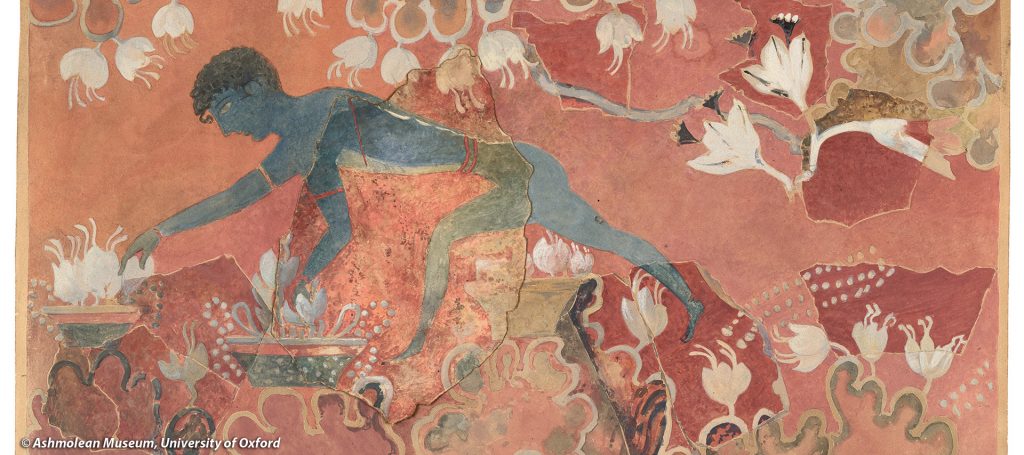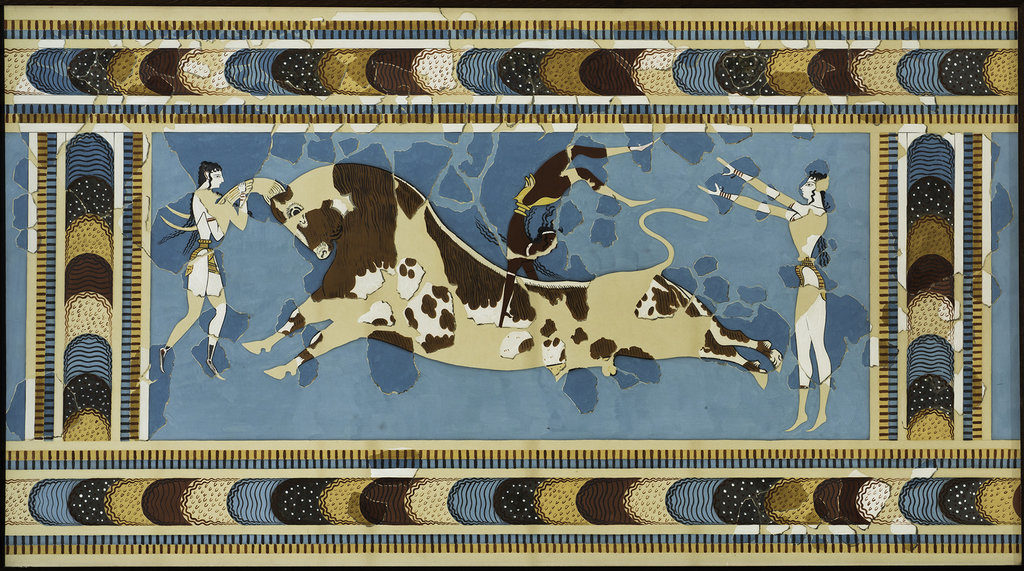
Price spent two years in residence at the Ashmolean and Pitt Rivers museums at Oxford University. There she became engrossed by watercolors from an archaeological mission in Crete, led by Sir Arthur Evans (1851-1941), who excavated the ruins of the Knossos palace.
The video Ms. Price produced in Oxford, “Restoring the Minoans: Elizabeth Price and Sir Arthur Evans,” “explores the slippages of archaeology and how easily we project present-day expectations onto the mystery of the past,” Jason Farago, the writer of the New York Times article says.
The exhibition “Restoring the Minoans: Elizabeth Price and Sir Arthur Evans” currently held at the Institute for the Study of the Ancient World in New York, features the video.
The historical half of “Restoring the Minoans” features both millenniums-old antiquities and early-20th-century impressions of the site made during Evans’ expeditions.

“Intrigued by both Evans’ overreaches and his team’s visual invention, Ms. Price created the two-screen video “A Restoration” (acquired by the Art Institute of Chicago.) It begins with a riot of vegetal imagery, sprouting from the darkness against a percussive score as a narrator — her voice provided by a text-to-speech engine — details the recreation of Knossos’s botanical decorations,” Farago writes about the artist’s video.
In the video, Ms. Price also presents objects from the museums’ collections, which appear as images afloat and intermingling on a computer desktop. The narrator explains she is reordering “photographic and archival records,” on a digital database.
“This new reconstitution of Knossos — a restoration of a restoration — takes place on a server. Archival imagery and new renderings flicker, multiply, and transform to give birth to a new vision of the past, more organic and impressionistic than the regimented knowledge of the museum,” the New York Times feature concludes.
See all the latest news from Greece and the world at Greekreporter.com. Contact our newsroom to report an update or send your story, photos and videos. Follow GR on Google News and subscribe here to our daily email!



